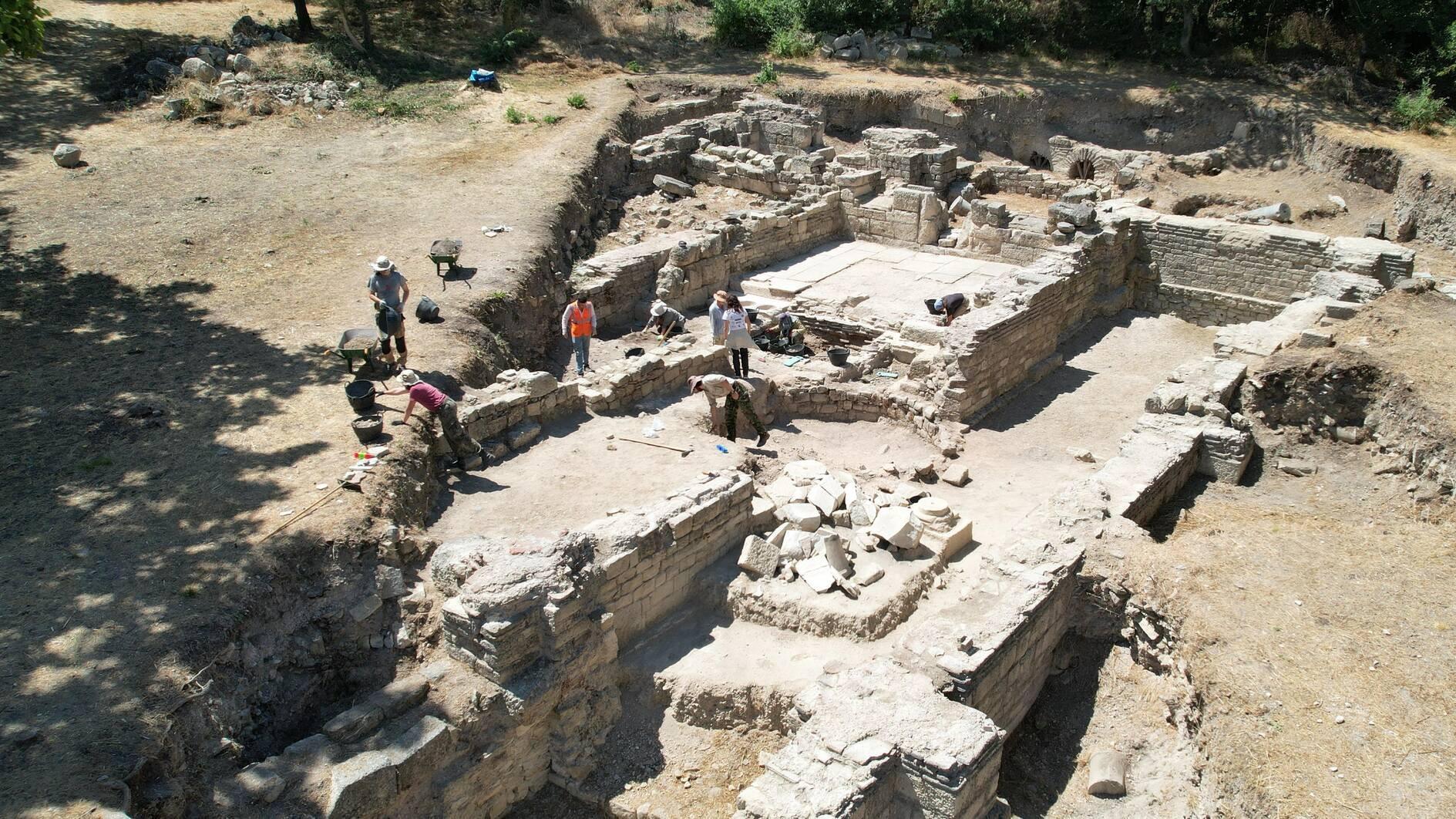
Archeological excavations in the ancient city of Bathonea, a site that dates back to the eighth and 11th centuries, have begun once again this year, uncovering remarkable finds that span from Viking relics to traces of an Umayyad siege.
This summer, a team of researchers, led by Professor Şengül Aydıngül, resumed excavations at the site located in Istanbul’s Avcilar district, focusing on what was once a customs building, a structure that holds more than just economic significance.
Aydıngül and her team have found evidence suggesting the building was destroyed in 680 A.D. during an Umayyad attack on Istanbul.
“Discovering the first signs of this siege here has been a breakthrough,” she explained. “It adds a new dimension to our understanding of the region’s history.”
Bathonea has long been recognized for its archeological importance, earning a spot on the “Top Ten of the World’s Most Important Archeological Discoveries” list. Since digging began in 2009, the site has revealed layers of history that show traces of earthquakes and early Christian symbols, including a Viking amber cross and an Ouroboros necklace, symbolizing Ragnar Lodbrok — artifacts that connect Bathonea to the broader narrative of early European history.
We are working in an area where various cultures have converged over millennia. Our ongoing excavations have revealed structures that date back at least 200 years and are expected to yield more valuable information,” said Professor Ömer Faruk Çelik, the vice-rector of Kocaeli University.
The team, comprising international and local experts, including those from Poland, has been working over the summer to explore the site more deeply. “The collaboration of archaeologists from Poland and Türkiye is a testament to the importance of international cooperation in preserving our shared cultural heritage,” Polish Ambassador to Türkiye Maciej Lang said during his visit to the site.
Among their findings are monumental structures, including a giant cistern with a 7,000 cubic meter capacity and evidence of a Roman-era martyr gravesite, later transformed into a Christian basilica.
The tomb was built for a man who was declared a saint. It is an extremely elaborate structure with its plan type and mosaics on the floor,” Aydıngün explained. “We are trying to bring this structure to its feet within the scope of the 'Heritage for the Future Project' and to open it to visitors as soon as possible."
Stating that the first traces of the siege of Istanbul during the Umayyad period were found in the structure where the customs building was identified during the excavations, Aydıngün said, "So far, we have identified two large ports. We named one of them the Great Port and the other the Small Port. At the same time, Istanbul's oldest and the largest cistern of the period it was built is here.”
“There are a few monumental structures. We determined that it was an ancient hospital. There are a lot of medicine bottles inside. Materials for medicine-making were found. There are other traces.”